I attended the New York Festivals Awards in Manhattan last night in the hopes of finding out what qualifies as “the greatest advertising in the world,” as the event bills itself. First of all, this is a very fun, very polished awards show, and the level of humility on the part of the winners puts other awards shows to shame. Second, they’ve broadened the definition of “advertising” to include “Branded Entertainment” (games and films), as well as public service print and videos. And third, while the show embraces the New York City esthetic of deco-era typography and Chrysler-building styled trophies, not a single New York agency won a thing. In fact, aside from two awards (to The Martin Agency and Wieden & Kennedy) the dozens of other awards went to firms in every market other than the U.S. Even the Emcee was British. So it was a true melting pot of talent.
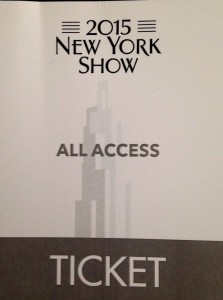
Some of the winners featured nudity and mild profanity, so that might explain a more constrained American presence among the awardees. However, it seems that the true split between being a winning entry and being an also-ran is rooted in the role that brands play in markets governed by systems other than abject capitalism. In America, the brands are still the “heroes” of our life, making us cooler or healing our wounds or helping us celebrate our appetites. Ex-US, the brands behave more like the host of a cool party. They create an event, invite the endearing souls of our culture—military veterans, the deaf, the vision impaired—and then smile in the background as those souls post, blog and take selfies. It’s brand value by association, and it is fabulously successful, it seems, in every culture but our own.
Breast cancer, World War I Christmas truces, “don’t put on make up and drive”—these were but a few of the heart-rending scenarios in which brands bathed in the glow of events they constructed.
Here’s the way it works in most American advertising:
1) the brand identifies a core value in customers’ hearts,
2) inserts itself into a situation where it can actively provide a practical or emotional benefit to said customers, and
3) reaps a direct reward for its performance from the satisfied customer.
Here’s the way it works in “the greatest advertising in the world”:
1) the brand identifies a core value in customers’ hearts,
2) sponsors an event in which customers can feel good about themselves by either spreading the word about a cause or having all the profits from the event get donated to a cause, and then
3) the brand pops up at the end reminding everyone at whose house they had such a good time.
Take the World War I Christmas truce. This is based on actual historical events. British and German soldiers called cease-fires, and left their trenches to exchange Christmas gifts with the other side and play soccer. Vivid scenes in the extended film…sorry, Brand Entertainment, show the carnage followed by an impromptu rendition of Silent Night, followed by the inter-rivalry revelry and an exchange of rations for chocolate. This all gets summed up with the logo for Sainsbury’s, a supermarket chain in the UK. Huh? The connection is not immediately clear. It appears that the promotion is saying: “Look at this wonderful embodiment of the human spirit, this willingness to set aggressions aside and embrace our better selves. You can now reclaim those same values in aisle three at Sainsbury’s.” Brand equity by simple association. However, when combined with social media and other venues, it becomes clear how the brand earns its equity beyond just a mere juxtaposition with a poignant story: Sainsbury’s—in conjunction with The Royal British Legion—donated every penny of every chocolate bar sold during the holiday season to military and veterans’ charities. (See it here at: https://www.youtube.com/watch?v=Kc_bq5bAyX8)
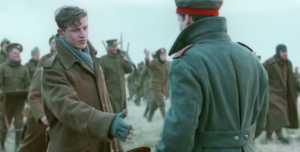

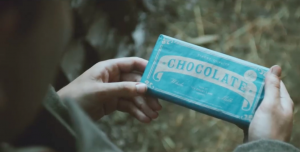
Now look at the American counterpart, the Weiden & Kennedy spot for Proctor & Gamble. It also features what we marketers call a “borrowed interest” approach, but with one notable exception. A montage of video clips shows moms picking their sons and daughters up off the ice and snow time and time again after they fall while ice skating or snow boarding. We watch as the kids grow bigger, fall harder, and still the moms are there to get them back on their feet. Cut to the Sochi 2014 Winter Olympics, and these same kids are now in their prime, winning medals for their countries, while those same moms cheer on the sidelines. Up come the logos for Pampers, Tide and Bounty, and then the sign off: “proud sponsor of moms.” What do disposable diapers, laundry soap and paper towels have to do with any of this? Proctor & Gamble would welcome the idea that they, as a company, pick up the moms who pick up the kids who pick up the gold, silver and bronze (See the full spot at https://www.youtube.com/watch?v=1SwFso7NeuA)
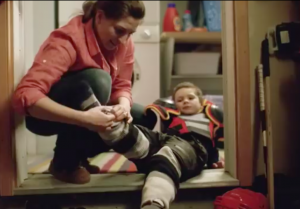
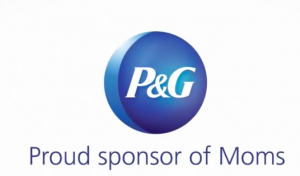
Sainsbury’s campaign is a win-win-win: people can opt in, buy some chocolate, and feel good about themselves for giving to charity; veterans get much needed donations; and Sainsbury’s enjoys some holiday admiration for their brand and, of course, increased store traffic. In the US, it’s just a win for P&G. There is no charitable component. It’s as if P&G believes that moms have already gotten their reward: Pampers, Bounty and Tide. The first campaign is highly effective at showcasing today’s brands in a new role than ever before: behind-the-scenes host of life’s best group efforts. The second seems like the same old “great by association” advertising seen every day for beer or soft drinks or other brand categories, where holidays and life achievements are made more “meaningful” by the presence of the hero brands.
By adding a charitable component, the branded ideas are today’s answer to an old-fashioned barn building or The Welcome Wagon. Everyone pitches in for the greater good. In an Adweek article by Tim Nudd entitled, What’s Changed, and What Hasn’t, in 100 Years of Brand Storytelling, Everything old is new again, he argues that the internet has expanded conversations beyond a local village to a global village, while simultaneously bringing back the equivalent of word-of-mouth advertising and brand building. He tries to conveniently put a bow on this astute observation by asserting that brands used to tell people stories, and now people are telling brand stories. However, he misses the much bigger point that brands still tell people stories, but they’re not directly about the brand anymore. They’re about an idea that can flatter the brand by association. The brand is now a decent-looking guy or gal who suddenly seems more glamorous, empathetic or caring by surrounding itself with glamorous, empathetic and caring friends, and then picking up the check.
When are healthcare brands going to avail themselves of this type of win-win-win brand building? Healthcare brands don’t even have to try as hard as a supermarket chain or paper towel. They already earn their equity by actively removing the obstacles of illness, or enhancing function to make peoples’ lives better. Why not bronze this equity and put it on the mantle? Sure, if you think hard enough and long enough, you can recall the healthcare industry sponsoring events such as the gay Olympics (AIDs therapies in the 1990s) or drug giveaways to indigent patients. But these were one-offs; a good start without sustained momentum.
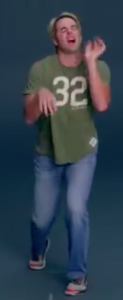
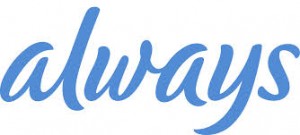
One of the few healthcare brand promotions that walked away with a top honor at The New York Festivals was for Always pads. (You may have seen it, and if not, you should at https://www.youtube.com/watch?v=XjJQBjWYDTs.) It features a series of young adults being asked to do things such as “throw like a girl,” “run like a girl,” etc. Of course, these young adults do their best to look incompetent and spastic. Then the interviewer asks for the same reactions from pre-pubescent girls and the responses are, well, normal. The girls all run and throw just fine. The entire spot calls attention to the fact that girls have their worst crises of confidence right around puberty, the time of their first period (hence the “cause” for Always pads). Yet the spot never crows about Always, nor dips below the high-minded concern for supporting girls and women with positive encouragement so that “like a girl” may never mean anything pejorative again at worst; or mean something wonderful at best. This is not just one example of “the world’s greatest advertising.” It’s also great branding. And we need more of it in healthcare.
